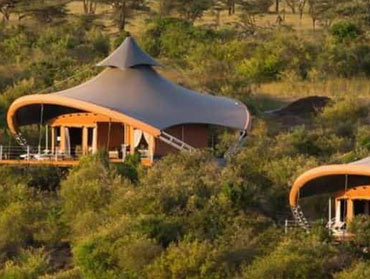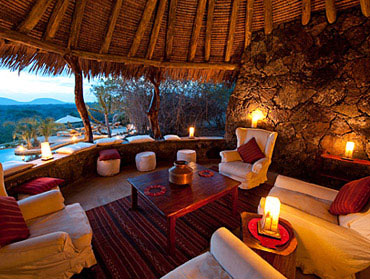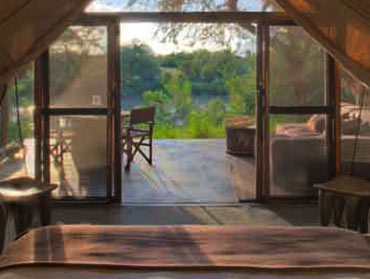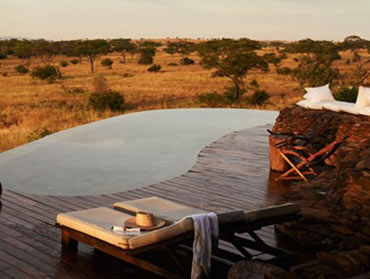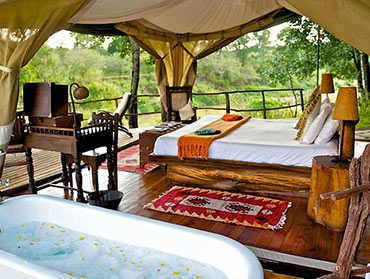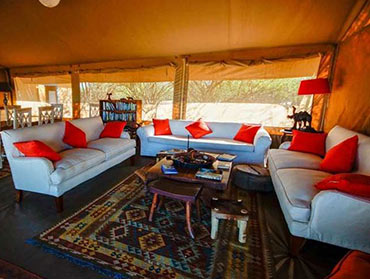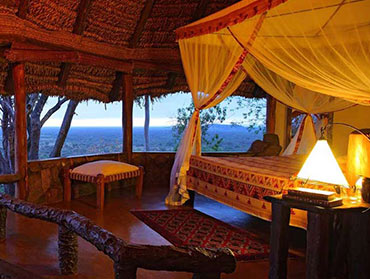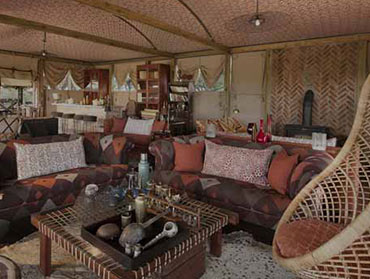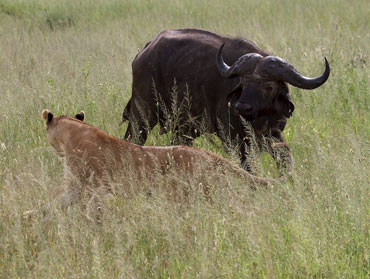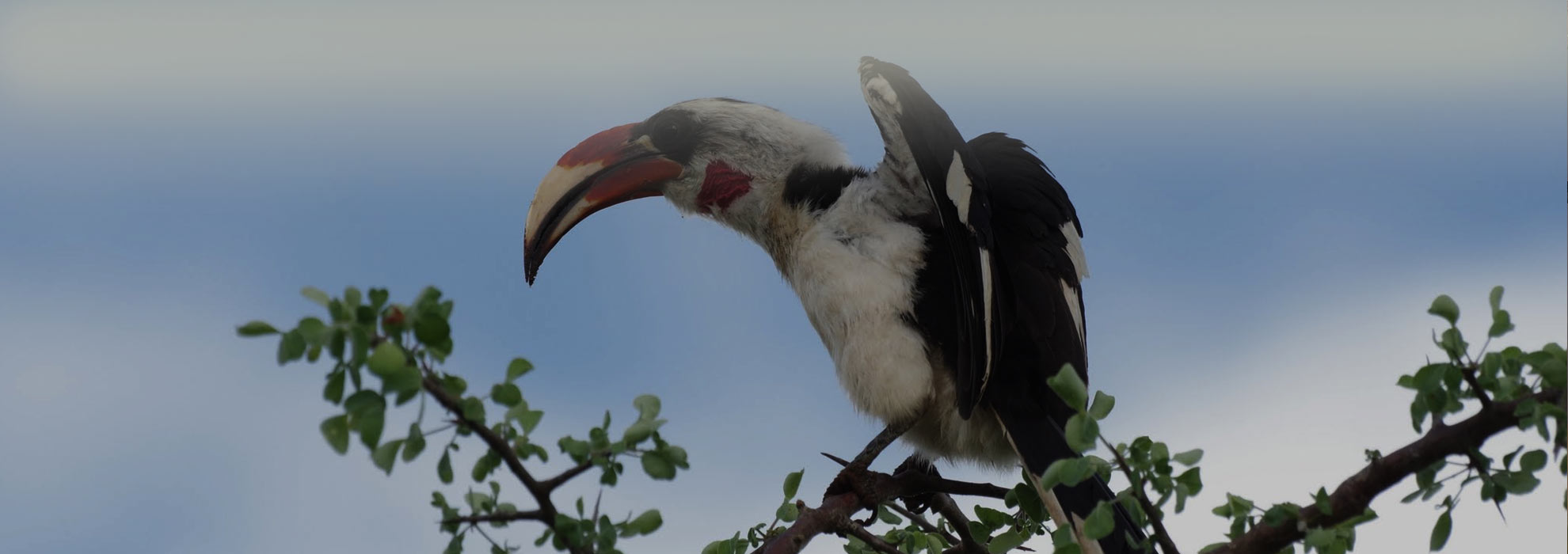
You will be met at Kilimanjaro International Airport by your driver-guide and our representative. We will take you to the Rivertrees Country Inn. This charming lodge is situated at the banks of picturesque Usa River on an old German coffee estate and offers stunning views towards Mount Meru and Mount Kilimanjaro. Simply walking around the lodge grounds itself is a delight for bird enthusiasts with over 100 species of birds having been spotted in the surrounding area; owls, in particular, like to rest atop the towering trees that surround the lodge. Our safari manager will come to meet you at the lodge and to provide you with a safari briefing followed by dinner.
Meal Plan: Breakfast, Lunch & Dinner
Spend the full day at Arusha National Park game and bird viewing. Enjoy a picnic lunch at Momella Lake, famous for huge flocks of colorful flamingos and stunning views of majestic Mount Kilimanjaro. Game drive around the different habitats in this truly beautiful park. There are black and white colobus monkeys (unique to this park in northern Tanzania), Sykes and vervet monkeys, shy forest duikers, leopards, and substantial herds of antelope. Guided by an armed ranger, you will hike the slopes of Mount Meru in dense forest or at the crater rim of Ngurduto Crater. Birds can be spotted everywhere in this beautiful national park, and species to look out for include silvery-cheeked hornbill, Hartlaub’s turaco, and various water birds including yellow-billed stork and many more. Overnight at hotel. All meals included.
From Arusha National Park you travel towards Tarangire, Tanzania’s third largest national park and sanctuary for an unusually large elephant population. Majestic baobab trees are an interesting feature of the park, dwarfing the animals that feed beneath them. Animals concentrate along the Tarangire River, which provides the only permanent water supply in the area. There is a great diversity of wildlife including lion, leopard, cheetah, and up to 6,000 elephants. A walking tour with a Masai guide or ranger at the park boundaries is also included. Even at the entrance to Tarangire National Park you will hear and see many birds. Superb starling are of course ubiquitous, while birds that can be spotted in the national park include yellow-necked francolin, lilac-breasted roller, buffalo weaver, ostrich, white-backed vulture, red-billed hornbill, magpie shrike, Fischer’s lovebird, and many birds of prey. Overnight at lodge. All meals included.
After breakfast, we depart for to Lake Manyara. Nestled at the base of the Great Rift Valley escarpment, the park is recognized for its incredible beauty. You can see many game animals such as buffalo, elephant, giraffe, impala, hippos, and others. The vast majority of the national park area is taken up with the lake itself, so naturally this corner of Tanzania is known for water birds. At the lakeside you can spot greater and lesser flamingo, great white pelican, great white egret, cormorants and plovers in vast numbers – all alongside lazing hippos and trotting warthogs! Overnight at Ngorongoro Farmhouse in Karatu nearby. All meals included.
After breakfast, you start on your way to Serengeti National Park. A picnic lunch will be provided. On the way you will stop at the Olduvai Gorge where anthropologists Louis and Mary Leakey made many significant discoveries, contributing to the theory that human life originated in Africa. After stopping for your picnic lunch on a kopje (rock outcropping) in Serengeti, you will continue further into the park for game drive. The Serengeti is the best-known wildlife sanctuary in the world and boasts many species of plain animals from hare to the elephant. The name Serengeti comes from the Masai word “Siringet” referring to an endless plain. There are various pockets of water in the Serengeti where birds such as sacred ibis, goliath heron, yellow-billed stork, Egyptian geese, plovers, and other water birds gather. Aside from this, there are over 450 species of bird residents in the area, including kori bustard, lappet-faced vulture, marabou stork, grey heron, hamerkop, secretry bird, various sparrow hawks, many eagles, helmeted and crested guinea fowl, cuckoos, kingfishers (including pied and malachite) bee-eaters, rollers, hornbills, shrikes, bulbuls, sunbirds, finches…..simply too many to name! Overnight at camp at Serengeti. All meals included.
A full day of game drives around Serengeti. Depending on the time of year and the migration of the herds, you can expect to see wildebeest, lions, elephants, giraffes, zebras, monkeys, baboons, hippos, rhinos, antelopes, and many birds and other species. Overnight at camp at Serengeti. All meals included.
In the morning, drive to Ngorongoro Crater. After arrival you will descend into the crater for a wonderful game drive (with a picnic lunch) inside the Ngorongoro Crater, often described as one of the wonders of the world. It is the world’s largest intact volcanic caldera and a a natural sanctuary for some of Africa’s densest animal populations. It is one of the few places where the rare black rhino can be observed in their natural setting. Picnic will be taken at Lake Magadi, famous for water birds. There are plenty of birds at the crater bottom, taking advantage of the staggering range of vegetation that can be found in this relatively small area. Ostrich and kori bustard roam the flat grasses, black kites swoop from up high, and turacos quickly dart from tree to tree. With a bit of luck the “Big Five” can be spotted during only one game drive. Overnight at lodge. All meals included.
In the morning, drive to Ngorongoro Crater. After arrival you will descend into the crater for a wonderful game drive (with a picnic lunch) inside the Ngorongoro Crater, often described as one of the wonders of the world. It is the world’s largest intact volcanic caldera and a a natural sanctuary for some of Africa’s densest animal populations. It is one of the few places where the rare black rhino can be observed in their natural setting. Picnic will be taken at Lake Magadi, famous for water birds. There are plenty of birds at the crater bottom, taking advantage of the staggering range of vegetation that can be found in this relatively small area. Ostrich and kori bustard roam the flat grasses, black kites swoop from up high, and turacos quickly dart from tree to tree. With a bit of luck the “Big Five” can be spotted during only one game drive. Overnight at lodge. All meals included.
After an early breakfast, start your drive to Amani Nature Reserve at Eastern Usambara Mountains. There, you will be met by the camp manger and discuss your program. In the late afternoon there is time for bird watching either at your camp or in the forest nearby. There are several bird species endemic to the Usambara area, including the Usambara eagle owl and the Usambara weaver. This is a real treat for genuine bird fanatics! Other notable species that can be spotted in the area include Amani sunbird, Fischer’s turaco, green-headed oriole, and more. Spend two days around Amani Nature Reserve. Overnight at the small basic camp. All meals included.
The next station of your journey is a stay at Mkomazi, the newest of all national Parks in Tanzania. It serves as a buffer to the adjacent Tsavo National Park in Kenya. The Pare and the Usambara Mountains form the boundary in the south. The two mountain ranges in the background scenery, alternating from sparse tree savannas to grassland, are the reason for a such an imposing and breathtaking landscape; and due to protection measures put in place, the number of animals has increased substantially. Although there are not as many animals as in some of the more well-known national parks, the wonderful landscape more than compensates for this. Bird enthusiasts can observe approximately 450 different species of bird life. Lesser-known species include martial eagles and various hoopoes, while more common types of birds include secretary birds, bee-eaters, hornbills, starling, and guinea fowl. Mkomazi is also famous for its breeding projects of African wild dogs, as well as the rare black rhino run by the George Adamson/Tony Fitzjohn African Wildlife Preservation Trust. If possible, you can visit the project and see the wild dogs and rhinos. If you wish, you can easily go on a night game drive on that evening or a guided walk around the camp. Overnight at camp. All meals included.
Depending on your departure, you still have time in the morning for game and bird watching or relax at your camp before your guide takes you back to Kilimanjaro Airport (driving time approximately three hours) for departure.



